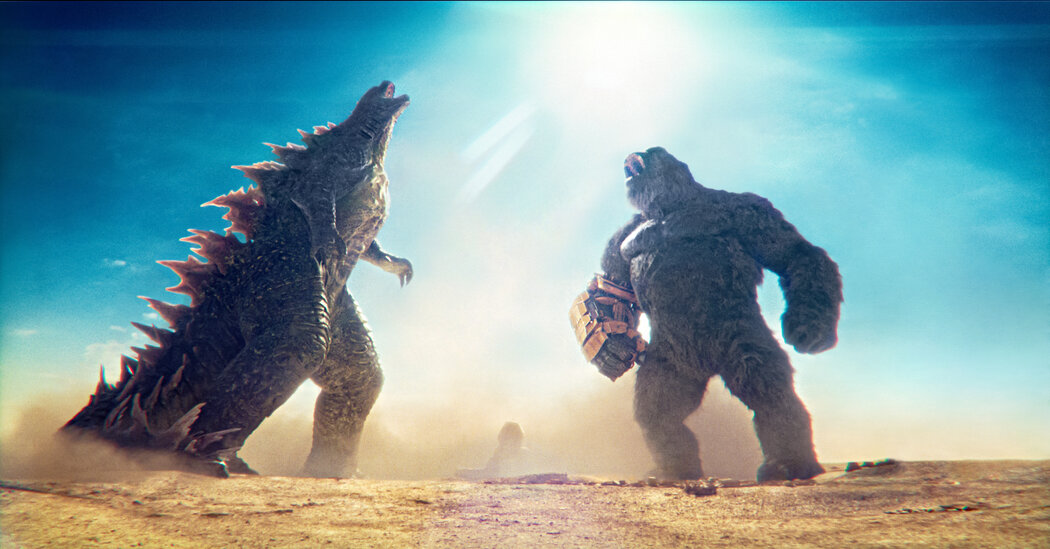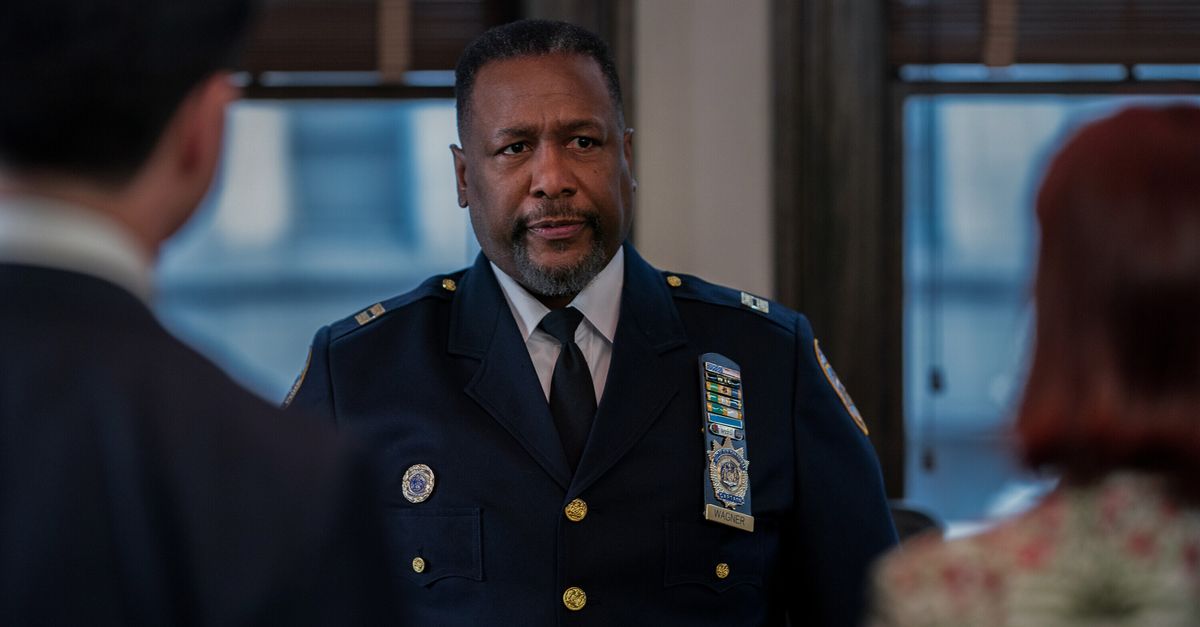This article contains spoilers for “Godzilla x Kong: The New Empire.”
By the end of “Godzilla x Kong: The New Empire,” the latest in the so-called Monsterverse franchise from Warner Bros., multiple cities around the world have been rendered essentially uninhabitable and treasured monuments have been turned to dust. Godzilla, Kong and their adversaries flatten sections of Rio, ripping buildings in half during their climactic brawl, as a monster that can shoot ice from its mouth coats the coastal setting, presumably freezing a bunch of citizens as well.
Earlier, the two big guys punch their way through the pyramids in Cairo as tourists and locals scramble away from falling rocks. On top of that, at one point, Godzilla also takes up temporary residence in the Colosseum in Rome after he stomps through that locale. It’s frankly pretty cute the way he curls up to nap in the ancient amphitheater like a puppy, but the fact that he probably killed thousands of people getting to his makeshift bed isn’t really addressed.
Directed by Adam Wingard, the film cares more about the beasties than it does anything else. Given the cartoonish tone Wingard is working in — Godzilla turns pink in this one while he and Kong fight a giant evil ape named the Skar King with a bone whip — it makes sense that there isn’t much dwelling on the human toll. Still, the sheer level of destruction is so outsize it’s almost amusing. Sure, you go into a Godzilla flick expecting for some structures to crumble, but this just feels extreme, especially in how casually it shrugs off the fact that monsters have just toppled thousands of years worth of history and countless lives.
Over the years, films starring Godzilla and his pals have varied wildly in how they deal with the creatures’ victims — they have been serious and outright silly. While sometimes Godzilla can be a way to explore very human fears, at other times he’s just an outlet to watch things go boom. “Godzilla x Kong” puts him firmly in this noisy camp, which makes the treatment of death just seem careless.
Perhaps one of the reasons “Godzilla x Kong” is so striking in how little it seems to think about damage is that the last “Godzilla” movie to hit theaters was entirely concerned with Godzilla as a representation of trauma.
That last one, Takashi Yamazaki’s “Godzilla Minus One,” a Japanese production that came to North American theaters in December and eventually went on to win the Oscar for visual effects, takes place in the aftermath of World War II. Godzilla serves as a reminder for the protagonist, Koichi (Ryunosuke Kamiki), of his own wartime guilt. It’s an emotionally potent film, explicitly about the value of human life, where Godzilla is ancillary to the tales of survival that Yamazaki wants to highlight.
And yet, it’s not as if every film from Godzilla’s home country has imbued the monster with gravity while all American productions go for spectacle over feeling. In fact, the current Warner Bros. Monsterverse started from a far more somber place, where the stakes felt much higher. Gareth Edwards’s 2014 “Godzilla” starts with the shocking death of a character played by Juliette Binoche that establishes the risks at play when you’ve got radioactive giants on the planet.
But as the Monsterverse has gone on, the material has gotten goofier, landing us where we are with “Godzilla x Kong.” It’s a pattern that also occurs in the original run of Japanese Godzilla films. Yes, Ishiro Honda’s 1954 original is a reflection of nuclear anxiety made in the shadow of the bombings of Hiroshima and Nagasaki. But by 1968, Honda made the bonkers “Destroy All Monsters,” in which Godzilla and his kaiju buddies on an island known as Monsterland are released by an alien species known as Kilaaks and attack global hubs like Moscow and Paris. Sure, you see the Arc de Triomphe get stomped, but the charmingly retro effects mean you are never really forced to think about who might be standing underneath it.
“Godzilla x Kong” has the problem of trying to split the difference between an absolutely ludicrous plot — there’s an ancient Indigenous telepathic population living in Hollow Earth that worships Mothra — and realistic special effects. Still, you can’t help but feel a tiny pang of sadness when one of the Wonders of the World is crushed.
Hollywood blockbusters underwent a reckoning for their unnecessary death counts when Superman and General Zod blasted through Metropolis in “Man of Steel” (2013) and the Avengers laid waste to the fictional Sokovia in “Avengers: Age of Ultron” (2015). Their sequels tried to deal with the recklessness; “Godzilla x Kong” marks a return to wanton turmoil.
“Godzilla x Kong” also has something else in common with the superhero genre: In this movie, Godzilla and Kong are supposed to be the good guys stopping monsters that are more evil than they are. If so, why does no one care that they kill so many people in the process? The audience might, but no one onscreen gives a damn.



